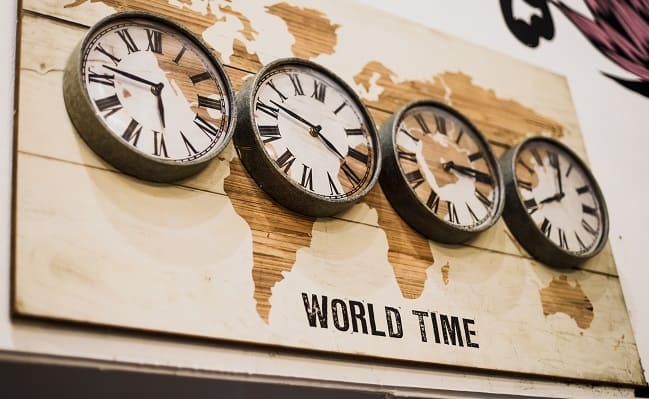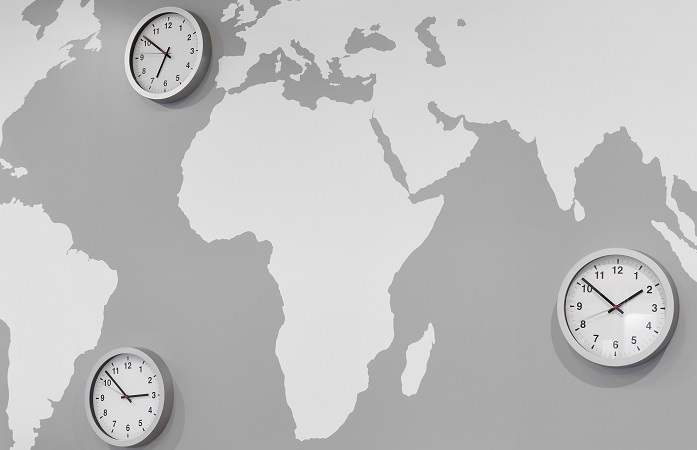
 Data Structure
Data Structure Networking
Networking RDBMS
RDBMS Operating System
Operating System Java
Java MS Excel
MS Excel iOS
iOS HTML
HTML CSS
CSS Android
Android Python
Python C Programming
C Programming C++
C++ C#
C# MongoDB
MongoDB MySQL
MySQL Javascript
Javascript PHP
PHP
- Selected Reading
- UPSC IAS Exams Notes
- Developer's Best Practices
- Questions and Answers
- Effective Resume Writing
- HR Interview Questions
- Computer Glossary
- Who is Who
What is the full form of GMT?
Introduction
Greenwich Mean Time (GMT) is used as an indication for time zones across the globe. It is the Prime Meridian (0° longitude) mean solar time at the Royal Observatory in Greenwich, London.

In industries that demand precise timekeeping, such as aviation, navigation, meteorology, and others, GMT is frequently utilized. It is also sometimes referred to as Coordinated Universal Time (UTC), even though UTC is a more accurate name for GMT.
History of GMT
The development of the railway and telegraph networks in the late 19th century led to an increased demand for a standard time system, which was when GMT got its start. The International Meridian Conference, which was held in Washington, D.C, in 1884, had the objective of establishing a prime meridian, or the global center of longitude. It was determined that a new time standard known as Greenwich Mean Time (GMT) would be based on the meridian that passes through the Royal Observatory in Greenwich, London.
GMT was first used as a global reference time for navigation and timekeeping and was based on astronomical observations of the sun's position in the sky at the Royal Observatory. As more precise timekeeping technologies, such atomic clocks, came into application, GMT was progressively replaced by Coordinated Universal Time (UTC), which is based on atomic time and is more accurate than GMT.
GMT is still commonly used to refer to UTC today, and it is still a significant historical standard for timekeeping and navigation.
GMT vs Coordinated Universal Time (UTC)
The two time standards that are used as the foundation for the world's time zones are GMT (Greenwich Mean Time) and UTC. There are some distinctions between the two though
Definition GMT is based on atomic time and is more exact than GMT. It is the mean solar time at the Royal Observatory in Greenwich, London.
Leap seconds Leap seconds, which are added to UTC in order to keep it in accordance with the Earth's rotation, are not taken into consideration by GMT. It means that there may be a 0.9-second difference between the two standards.
Time zones UTC is the main time standard for international timekeeping, whereas GMT is used as a reference time for the world's time zones.
Naming convention Although UTC and GMT are frequently used together, they are officially distinct standards. GMT's replacement, UTC, uses more accurate timekeeping techniques.
In practical terms, the majority of people similarly refer to GMT and UTC, and the two time zones are frequently used equally in common usage. UTC however, is the most precise and commonly accepted standard for precise timekeeping and scientific applications.
Usage and significance of GMT
The time standard GMT (Greenwich Mean Time) has a long history of use and importance in many industries, including:
Navigation Mariners who use the Prime Meridian as a reference point to establish their longitude use GMT as a reference time for navigation.

Aviation For the purposes of flight planning, scheduling, and other matters pertaining to aviation, GMT is utilized as the reference time. Additionally, it is employed for organizing global air traffic control.
Science Various scientific disciplines that call for exact timekeeping, such as astronomy, meteorology, and geology, utilize GMT.
Technology GMT is used to coordinate worldwide telecommunications and as a reference time for computer systems, especially those that use the internet.
History The formation of modern time standards and time zones relies heavily on the historical accuracy of the Greenwich Mean Time (GMT)
Conclusion
In conclusion, for more than a century Greenwich Mean Time (GMT) has been a crucial time standard in the fields of timekeeping, navigation, and other things. It serves as a standard time for all time zones throughout the globe and is based on mean solar time at the Royal Observatory in Greenwich London. GMT continues to be a crucial historical reference and is still used in many industries that require specific timekeeping and coordination across time zones, while being largely replaced by more precise time standards like Coordinated Universal Time (UTC).
FAQs
Q1. Does GMT mean BST (British Standard Time)?
Ans: No, GMT and BST aren't comparable. BST, or daylight saving time, is observed in the United Kingdom throughout the summer. GMT, or Greenwich mean time, is the time standard based on the mean solar time at the Royal Observatory in Greenwich, London.
Q2. What is GMT important for navigation?
Ans: The Prime Meridian, which passes through the Royal Observatory in Greenwich, is used to calculate longitude, hence GMT is crucial in navigation since it acts as a reference time. Navigators can determine their position and design a course to their destination by comparing the local time with GMT.
Q3. Is GMT still in use today?
Ans: Even though more precise time standards like UTC have essentially replaced GMT, the word GMT is still often used to refer to UTC and serves as a valuable historical reference for timekeeping and navigation. It is also used in a number of scientific and technological disciplines that need precise time synchronization between distinct time zones.

